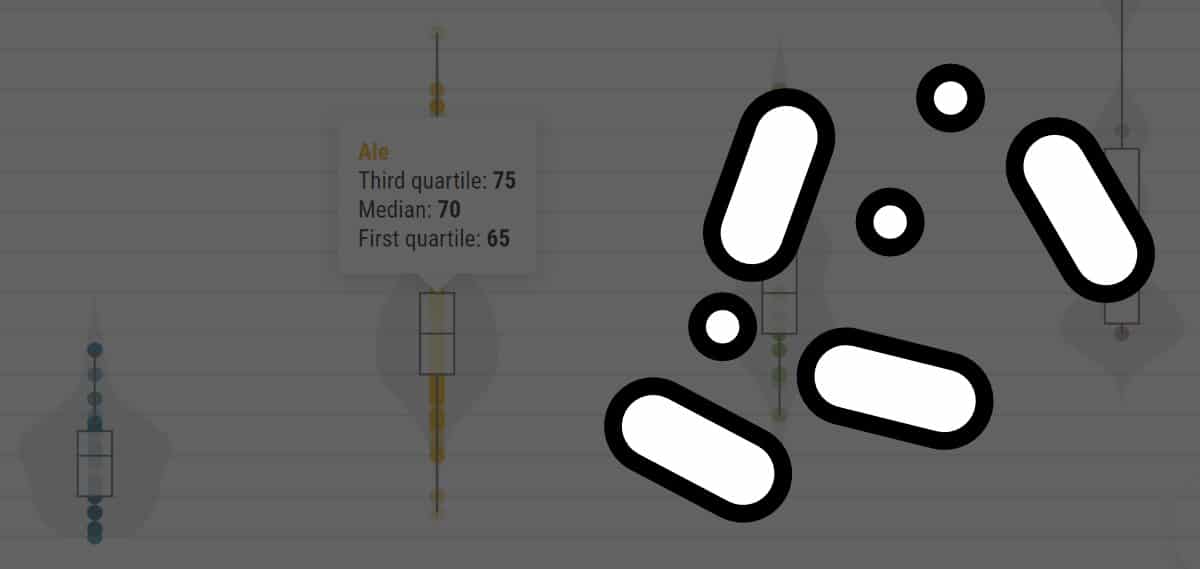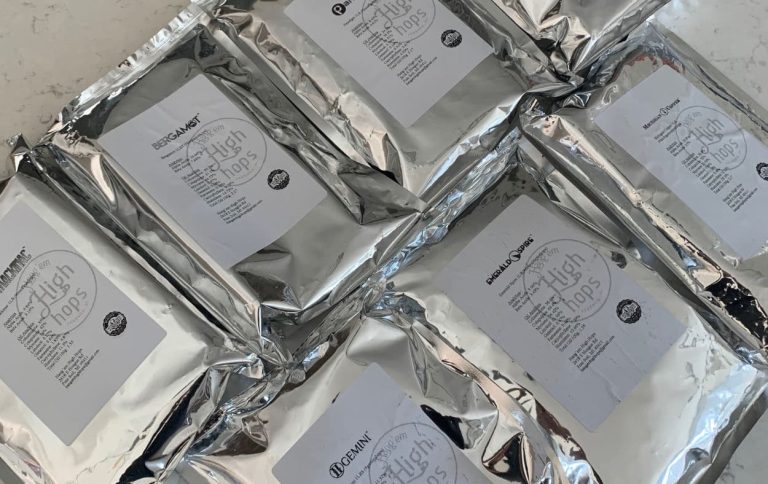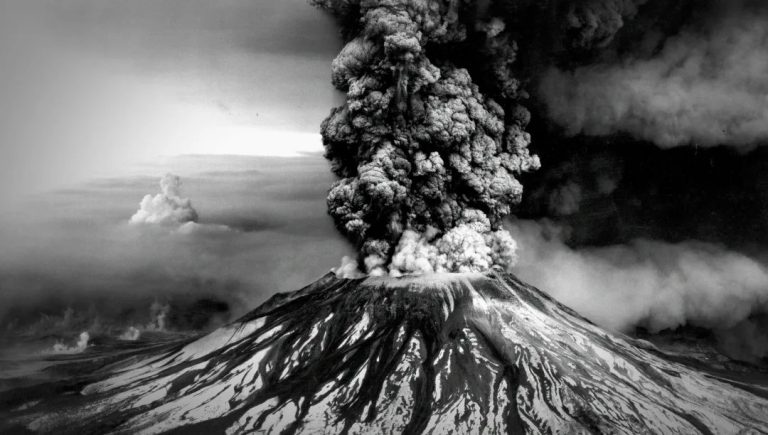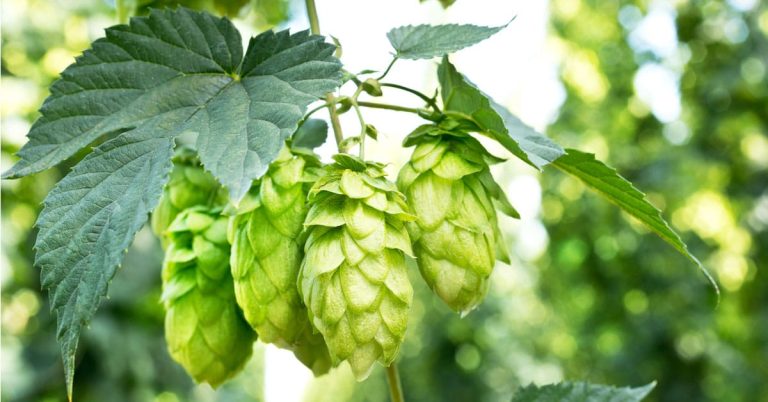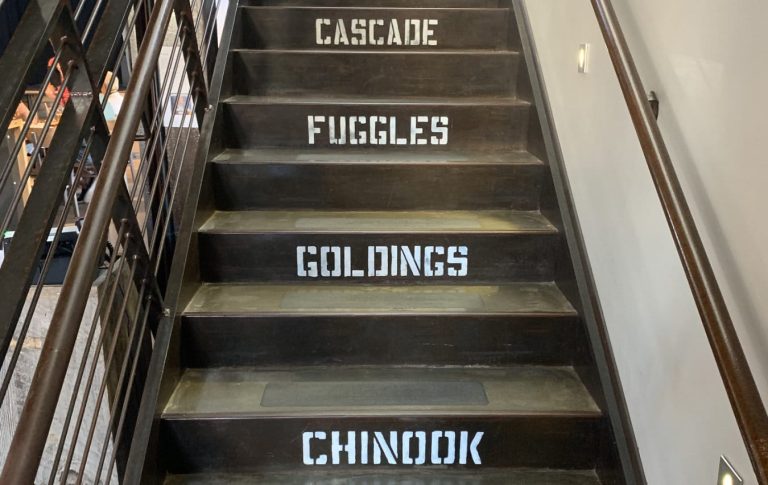Visualizing Differences in Yeast Strains
I do a lot with data on this site. Most of our data-themed articles are surrounding hops, and its for a couple of good reasons. Hops simply have more data around them, and it is usually scattered across multiple sites (well it was, until we came around). Hops have over thirteen datasets that we are able to dissect and analyze.
Yeast (unfortunately for us) have only four:
- Attenuation – Refers to the percentage of sugars in the wort that end up being converted into alcohol.
- Alcohol Tolerance – Refers to how much alcohol the yeast can sustain before becoming inactive. As the alcohol content (ABV) increases, the yeasts begin to “go to sleep” and stop fermenting.
- Optimal Temperature – The preferred operating temperature range of a yeast.
- Flocculation – Refers to the tendency of yeast to form clumps called “flocs” that drop as fermentation finishes. Unfortunately flocculation is usually just described as Low, Medium, High… and there do not appear to be any hard numbers around this element, so we decided against using it in any of our diagrams.
Now, I am certain yeast banks like GigaYeast or WhiteLabs have much more data on their particular strains, but that proprietary data is generally not public, and really not used by brewers like us. The data we’ve been able to accumulate has come from the distributors and suppliers themselves.
However, I wanted to give our yeast data some love. Below are four visualizations based entirely off the data we have in our yeast database.
We decided to break our data down into four different species of “yeast”. The reason for the air quotes is that we’ve included bacteria as one of those species. All blends and entries without a complete dataset were excluded from these visualizations, which left us with 348 strains of yeast from 15 different manufacturers. The species categories are as follows:
- Ale (Saccharomyces cerevisiae)
- Lager (Saccharomyces pastorianus)
- Sour (Brettanomyces)
- Bacteria (Lactobacilous, Pediococcus, etc.)
These charts were created with Flourish, and feature violin plots. The gray area around the box and whiskers show the total amount of yeasts in a particular strain that fall into that range.
Yeast by Optimal Temperature Range
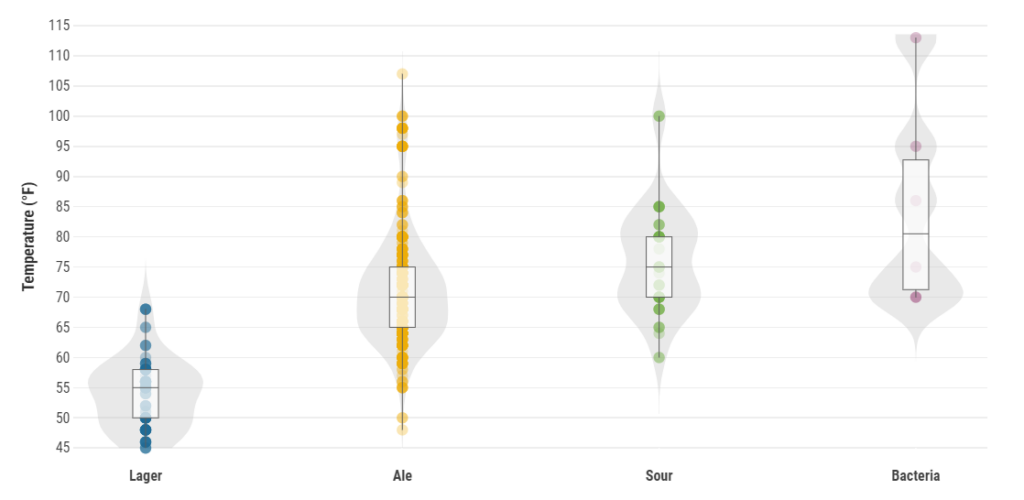
No surprises here. We can see that Lager yeasts prefer an average temperature 15°F less than Ale yeasts. We can see some outliers in each of these two datasets, but the maximum Lager yeast doesn’t even match the average Ale yeast’s preferred temperature.
The lager yeast with the highest preferred temperature is High Pressure Lager Yeast (WLP925), which is a unique strain from White Labs that is used to quickly ferment lagers in under a week.
The Ale yeast with the lowest preferred temperature is Imperial’s G05 Kaiser, which is a German Ale yeast which is used for brewing lighter styles such as blondes and Berliner Weisses.
The maximum outliers for Ale yeasts are all Kveik strains that prefer temperatures of 90°F and higher. Kveik strains are known to produce funky flavors when fermented at the high end of their ranges.
Sour yeasts and bacteria prefer an average temperature that is between 5-10°F higher than Ale yeasts. Most of these yeasts and bacteria are used in conjunction with an ale yeast to complete the fermentation.
| Species | First Quartile | Median | Third Quartile |
|---|---|---|---|
| Lager | 50 | 55 | 58 |
| Ale | 65 | 70 | 75 |
| Sour | 70 | 75 | 80 |
| Bacteria | 71.3 | 80.5 | 92.8 |
Yeast by Attenuation
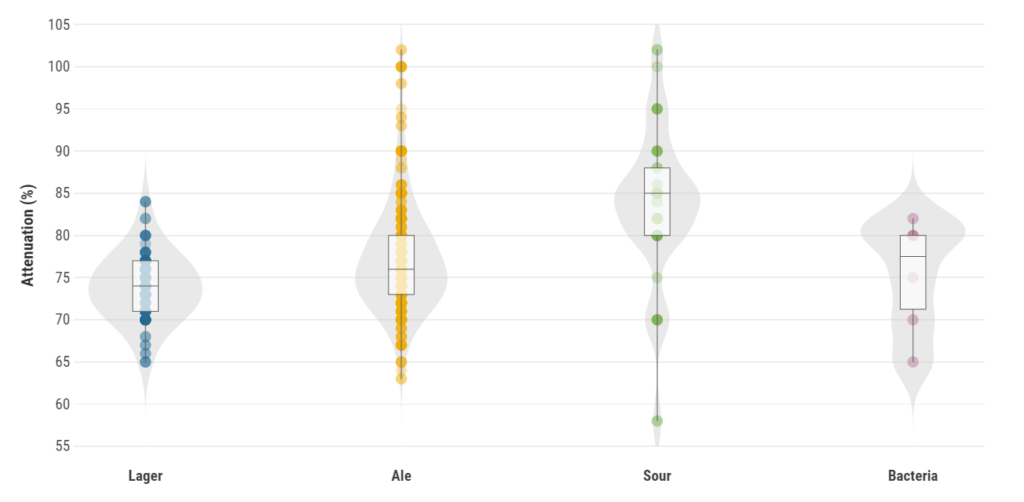
The attenuation quartiles are pretty similar between the two main species of Lager and Ale yeasts. Their quartiles are only separated by at most 3 percentage points at any point in the diagram. However, ale yeasts have some major outliers at the top end of the diagram.
The highest any lager yeasts attenuate is upwards of 84%, and it is the Fermentis strains of S-23, W-34/70 and S-189 that reach those levels. The highest attenuating ale yeasts all have the STA1 gene, which can over-attenuate beers due to the fact they can utilize some dextrins – that are normally unfermentable – into fermentable sugars.
| Species | First Quartile | Median | Third Quartile |
|---|---|---|---|
| Lager | 71 | 74 | 77 |
| Ale | 73 | 76 | 80 |
| Sour | 80 | 85 | 88 |
| Bacteria | 71.3 | 77.5 | 80 |
Yeast by Max Alcohol Tolerance
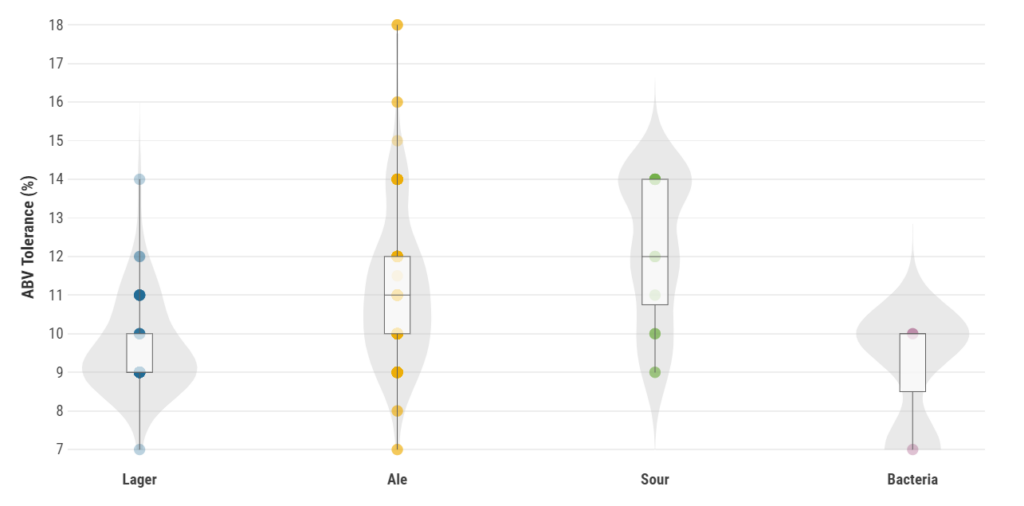
Viewing yeast by their maximum alcohol tolerance is even less exciting than the other breakdowns. All yeast and bacteria max out somewhere between 6% and 18% ABV. Lager and strains max out at the lowest range, averaging out at 9% ABV. Ale strains are one point higher at 11%. and Sour strains average out at 12%.
The highest ABV tolerant strains top out at 18%, and we have four of them in our database:
- Escarpment Voss Kveik
- Prise de Mousse Wine Yeast (EC-1118) – Not technically a beer yeast, but we did use it for our cider recipe.
- Super High Gravity Ale Yeast (WLP099) – White Labs mentions that this yeast can sometimes tolerate ABVs all the way to 25%.
- SafBrew HA-18 – A blend of POF+ active dry yeast and enzymes.
The alcohol tolerance levels are commonly achieved by the yeast themselves. They start out in wort consisting of 100% sugar and no alcohol, then digest it until they reach either their max attenuation or the point where the ABV makes them sleepy. Most bacteria however, do not create alcohol, so their tolerance is dependent on the yeast they are pairs with.
| Species | First Quartile | Median | Third Quartile |
|---|---|---|---|
| Lager | 9 | 9 | 10 |
| Ale | 10 | 11 | 12 |
| Sour | 10.8 | 12 | 14 |
| Bacteria | 8.5 | 10 | 10 |
